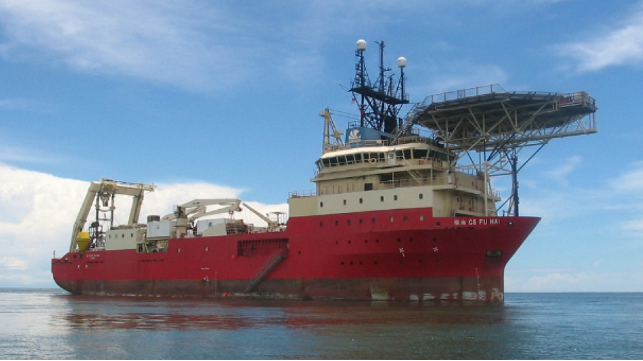How China is Winning the Subsea Internet Cable Competition in Africa

Since its launch in 2013, China’s Belt and Road Initiative (BRI) has received extensive attention against the backdrop of growing national debts in many African countries. BRI has led to creation of new portfolios at law firms, think tanks, banks and media to reap the perceived benefits of Chinese infrastructure investment. Opinions are torn between BRI as a Trojan horse for neocolonialism or a gift horse that will usher industrialization and economic empowerment to developing countries. The focus has mainly dwelled on two features: the overland Silk Road - vast networks of railways, energy pipelines and highways - and the maritime Silk Road, which will accommodate China’s expanding maritime traffic through port developments in the Indian Ocean.
However, the spotlight on China’s Digital Silk Road (DSR) has remained faint, despite its overarching role in realization of the BRI. Announced in 2015, Beijing hopes to leverage the DSR to enhance its digital connectivity abroad and - most importantly - facilitate China’s ascendance as a global technological superpower. Other objectives of the DSR include creation of a China-centric digital infrastructure, exporting industrial overcapacity, establishing access to large pools of data and creating a technological conduit to export Chinese soft power.
The reach of the DSR is readily apparent in many African governments’ increasing reliance on Chinese technology. Studies by Steven Feldstein - a Carnegie Endowment for International Peace Senior fellow - on China’s digital influence in Africa have mapped how Chinese firms like Huawei, Hikvision and Dahua are building surveillance networks, high-tech censorship tools, and supplying advanced social media monitoring capabilities to African countries.
In 2014, Safaricom - Kenya’s telecom giant – partnered with Huawei to deploy over 1,800 CCTV cameras in the city of Nairobi. The live cameras are integrated through wireless infrastructure to Kenya National Police Headquarters, where the monitoring happens. Kenya is part of the Huawei “Safe City” project, which supplies surveillance technology to enhance police and security force capabilities. Other countries under this program include Botswana, South Africa, Uganda, Zambia and Mauritius. This is just one part of the 70 percent of Africa’s ICT infrastructure that is built by Huawei, according to an analysis by Gyude Moore of Center for Global Development.
Subsea cable connectivity
But how does Chinese digital technology diffuse throughout Africa? One of the prominent ways is through subsea data cables. Subsea cables carry over 95 percent of all international data – far more than the amount transmitted by satellite technology. China currently dominates in projects aimed at connecting the African continent to the internet. Two flagship subsea cable projects highlight China’s steady match to wrap the African continent with its data cables, much in the same manner as the spread of British telegraph cables in the 19th century.
The Pakistan & East Africa Connecting Europe (PEACE) cable is one such project developed by Huawei Marine Networks, which was recently acquired by Hengton Group, one of China’s largest producers of advanced submarine-grade fiber. Hengton is currently under investigation by European Commission for selling at artificially low prices (dumping). The PEACE cable begins in Gwandar, Pakistan - a Chinese-operated port - and it’s slated to become the shortest route between Asia and Africa. The 15,000-kilometer route has landing sites in Djibouti, Kenya, Seychelles and South Africa, along with a branch that connects to Europe with a landing site in Marseille, France.
The second project is 2Africa, dubbed to be one of the largest subsea cable projects in the world. It will be implemented under a consortium comprised of China Mobile International, Djibouti Telecom, Facebook, MTN GlobalConnect, Orange, Saudi Telecom Company (STC), Telecom Egypt, Vodafone and WIOCC (West Indian Ocean Cable Company). The 37,000-kilometer cable will interconnect 23 countries in Africa, the Middle East and Europe, extending to Asia via the main Europe-to-Asia subsea cables. It will also have 21 landings in 16 African countries, and it is expected to go live by 2024 (https://www.2africacable.com/).
Growing demand, growing risk
With a growing young population and middle class, bandwidth demand in Africa is massive. According to data by Submarine Cable Networks, African international bandwidth grew by 45 percent annually between 2015 and 2019. To meet this demand, China is positioning itself as a reliable digital services provider for African nations, and this could be part of the reason it has been aggressive in building subsea cable systems. The DSR offers last mile connectivity between the Belt and Road Initiative and the African people themselves - who previously lacked a personal stake in China’s infrastructure projects – and it makes this connection in the subtlest way possible.
The spread of 5G and applications of internet of things (IoT) in industrial processes will increase demand for inexpensive, high-quality technology and internet coverage in Africa. However, analysts are concerned by what appears to be a push by China to monopolize digital network systems in Africa, risking espionage or the adoption of the technology-enabled authoritarianism found in China.
The opinions expressed herein are the author's and not necessarily those of The Maritime Executive.
